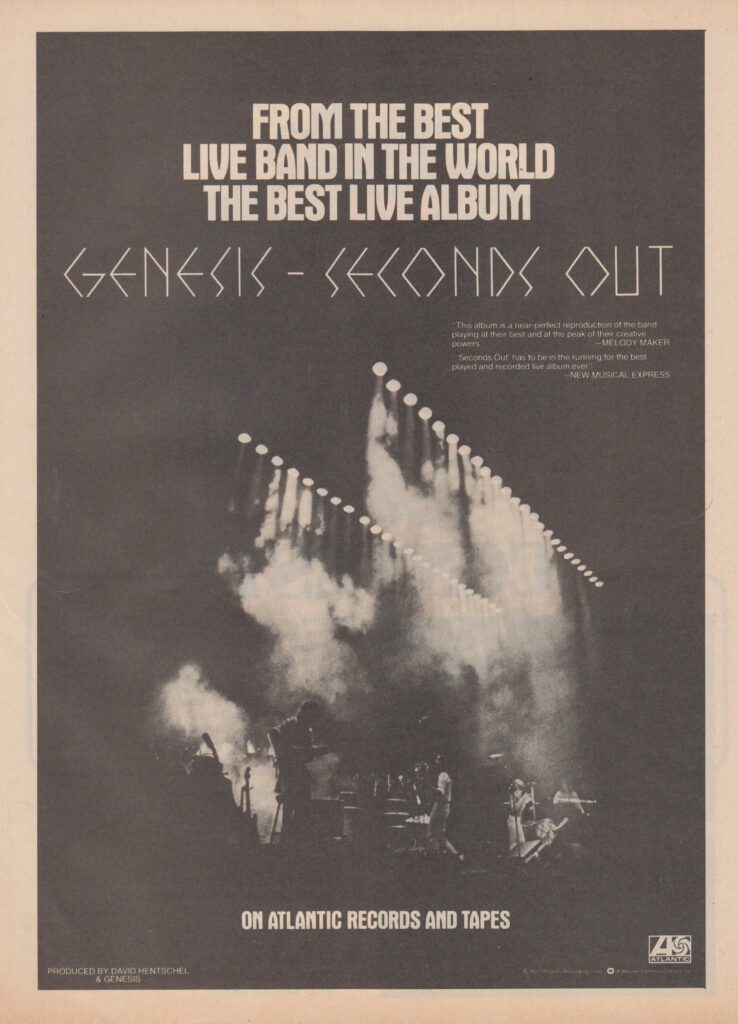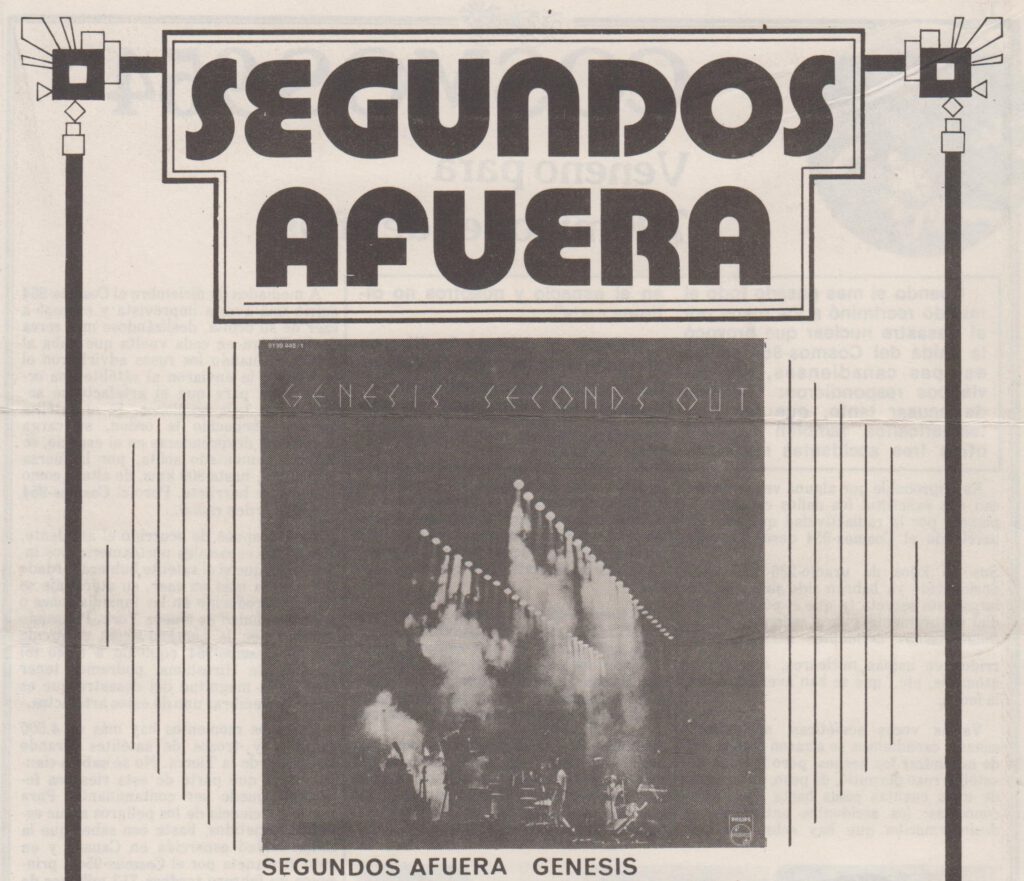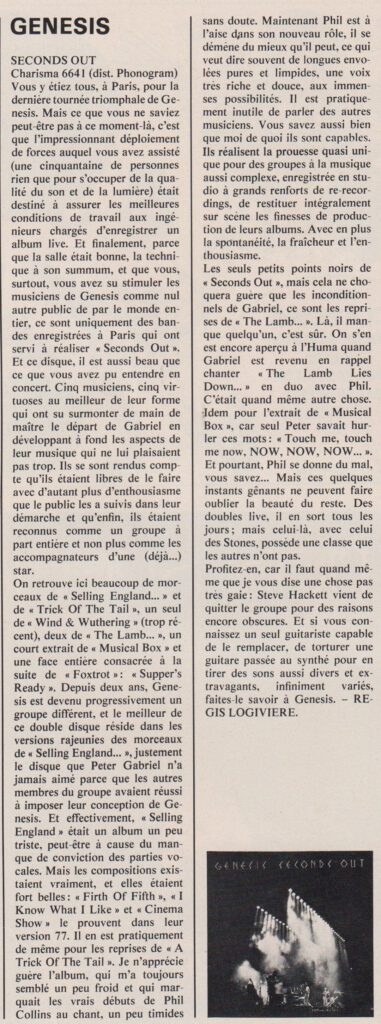
GENESIS: SECONDS OUT
The Best Live Album
by MGS
As the title states, Seconds Out was the second live release from Genesis. It was also the start of what was to become an amazingly successful career following the departure of Peter Gabriel.

Although they had begun to establish themselves as one of the foremost recording artists and live acts from the aptly named ‘Prog Rock’ era, the release of A Trick Of The Tail and Wind & Wuthering paved the way to their future success. Genesis proved that the writing and production was an entire band collaboration, and not, totally down to Peter Gabriel.
As the frontman it was presumed Gabriel was the sole writer and controlled all elements of the bands recordings, but as history proved, this was not the case and the real fans know this. Genesis would not have been Genesis without these five individuals being thrown together. This live recording features mainly Gabriel era classics, only five of their new recordings appearing, with the only track from Wind & Wuthering being Afterglow.

Phil Collins’s vocals are exceptional and at times very ‘Gabriel’ sounding, which is no surprise as he always supplied backing vocals, also having sung solo on previous albums. Supper’s Ready is one of many highlights on this waxing. These are only my personal opinions but being a lifelong fan I am very bias. Collins becoming the lead vocalist proved to be the best decision for all concerned, including the many fans of the band.

Although they recorded many shows from the 1976 and 1977 tours, only one track featuring Bill Bruford came from the 1976 tour, this being The Cinema Show (Pavillion de Paris). All other tracks being credited from the 1977 Wind & Wuthering Tour (Palais des Sports, also Paris). Chester Thompson proved to be more than capable of joining the band and brought a new aspect to the Genesis sound.
The album cover also shows all aspects of a live show. From actual live images to the crew and set up of the production using the entire double cover and inner sleeves. This is truly a remarkable live album. The prerelease adds all stated, The Best Live Album from The Best Live Band; this was not an exaggeration at that time. I was fortunate enough to see them live on both these tours and this album is a great representation of those concerts.
The only downside to this album is what became the last appearance of Steve Hackett with the band on any recording. A sad day. His leaving was announced five days prior to the album’s release although he left during the mixing of the album. Thanks Steve. Genesis would not have become what they are without you!

